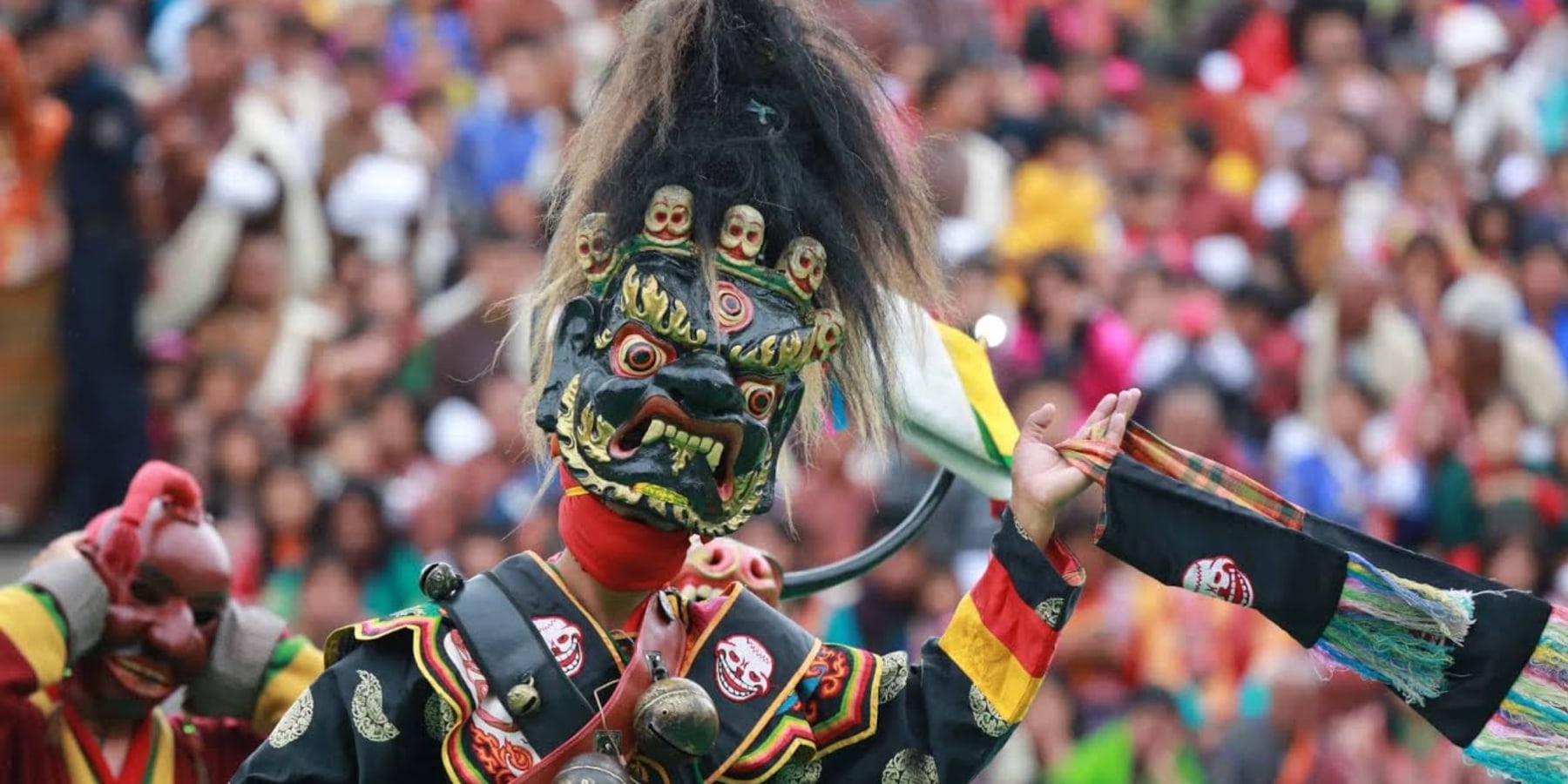
Welcome to the land of dragons, where mysticism blends with merriment and tradition intertwines with festivity! Bhutan's Tshechu is no ordinary festival; it is a vibrant celebration of life, filled with colors, music, and cultural richness. Prepare for an exhilarating journey into the enchanting world of Tshechu, where each moment reflects the spirit of Bhutan.
What is Tshechu?
Tshechu, also known as the Mask Dance Festival, is Bhutan's most significant religious event. Held annually in monasteries and dzongs across the country, Tshechu honors Guru Rinpoche, also known as Padmasambhava, the "Lotus-Born Teacher" who brought Tantric Buddhism to Bhutan in the 8th century. For locals, Tshechu is a time for communal gathering, entertainment, spiritual cleansing, and receiving blessings.
A Tapestry of Colors and Craftsmanship
Attending a Tshechu festival is a feast for the eyes. Locals dress in their finest hand-woven kiras and ghos, showcasing Bhutanese artistry and craftsmanship. Each garment, with its intricate designs and vibrant colors, reflects the essence of Bhutanese tradition and pride. The vivid patterns and elegant draping offer a glimpse into the country’s rich textile heritage.
The Legends and Lore of Tshechu
According to legend, Guru Rinpoche performed miraculous dances in Bhutan to banish demons and bring blessings to the land. These sacred dances, known as cham, have become the core of Tshechu, symbolizing the victory of good over evil. The festival also commemorates the birth anniversary of Guru Rinpoche. The air is filled with the sound of drums, the sight of colorful costumes, and the joyous laughter of locals celebrating their beloved Saint.
The Sacred Cham Dances
A highlight of the festival, Cham dances are sacred performances where monks and villagers don ornate costumes and masks to represent gods, goddesses, and mythical creatures from Buddhist folklore. These dances—such as the Black Hat Dance and Dance of the Noblemen and the Ladies—are rich in symbolism, embodying spiritual messages and teachings.
Monks and participants are adorned in vibrant attire, performing dances like the Dance of the Lords of the Cremation Grounds and the Dance of the Terrifying Deities. These performances are believed to purify the spectators' souls, offering blessings and spiritual elevation. The rhythmic accompaniment of cymbals, drums, flutes, and yak horns creates a deeply resonant and soul-stirring atmosphere.
Atsaras: The Festival’s Playful Guardians
During Tshechu, the comical Atsaras take the stage, wearing distinctive red masks with hawkish noses and carrying giant phalluses. Their role extends beyond providing entertainment; they encourage spiritual liberation among the crowd and ensure that the festival runs smoothly. Atsaras, derived from the Sanskrit word "Acharya" (holy master), are also storytellers, providing context for the masked dances.
The Sacred Thongdrel
One of the most revered aspects of Tshechu is the display of the Thongdrel, a massive silk appliqué often depicting Guru Rinpoche or other deities. The Thongdrel, which symbolizes "liberation at sight," is only revealed during special occasions, and viewing it is believed to grant blessings and spiritual merit. One of the most famous Thongdrels is unveiled during the Paro Tshechu, drawing crowds of devotees and tourists alike.
Regional Variations of Tshechu
Each region of Bhutan adds its unique flavor to Tshechu. In Paro, the unfurling of the Guru Thongdrel is a breathtaking moment. In Punakha, locals perform the lively Dance of the Noblemen and the Ladies during the Punakha Drubchen, filling the valley with laughter and joy. These regional celebrations highlight Bhutan’s diverse cultural heritage.
Cultural and Culinary Delights
As you explore Tshechu festivities, you will encounter bustling marketplaces offering a variety of Bhutanese delicacies such as momos, ema datshi (chili cheese), and ara (local rice wine). Additionally, beautiful handicrafts, including hand-carved wooden masks and woven textiles, are available for purchase, providing perfect souvenirs of your experience.

